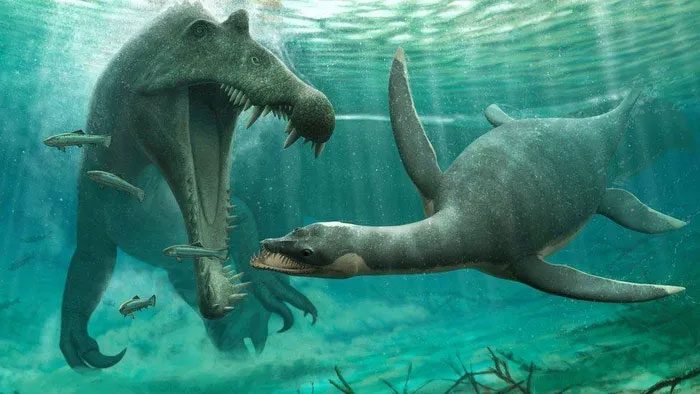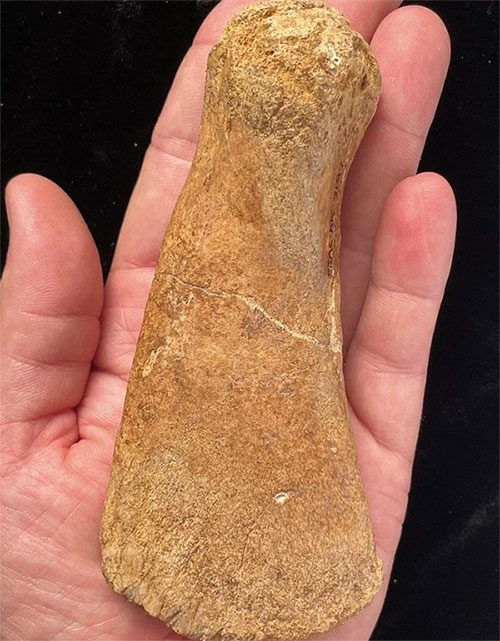Fossils of a prehistoric reptile have been discovered in a 100-million-year-old river system in the Sahara Desert of Morocco.
This suggests that some species previously thought to be marine organisms may have lived in freshwater systems, BBC reported on July 27.
Researchers from the University of Bath noted that it seems “reasonable” that a plesiosaur could have survived in a Scottish lake.
However, the research team also pointed out that this long-necked prehistoric reptile went extinct alongside the dinosaurs 66 million years ago.

Simulation showing a plesiosaur evading another predator. (Photo: Dr. Nick Longrich).
Fossils of adult plesiosaurs measuring 3 meters long and the upper limb bones of a juvenile plesiosaur measuring 1.5 meters have been found at the bottom of a Cretaceous river.
Dr. Nick Longrich from the Milner Centre for Evolution at the University of Bath stated: “We don’t really know why the plesiosaur lived in freshwater.”
“There is a bit of debate, but who can say that just because we – paleontologists – have always called them ‘marine reptiles’ they must have lived in the sea? Many marine animals have invaded freshwater environments.”
While marine animals like whales and dolphins may wander into rivers – either to feed or because they are lost – the fossil evidence suggests this is unlikely for plesiosaurs.
Scientists propose that one possibility is that plesiosaurs could thrive in both freshwater and saltwater environments.
The researchers from the University of Bath, the University of Portsmouth, and Hassan II University in Morocco contributed to this discovery.
Plesiosaurs were first discovered by fossil hunter Mary Anning in 1823. This reptile is characterized by its small head, long neck, and four long flippers, earning it the nickname “long-necked sea monster.”
The fossils of plesiosaurs have inspired the recreation of the Loch Ness Monster.

Plesiosaur fossil bones found in a 100-million-year-old river system in the Sahara Desert of Morocco. (Photo: BBC).
This freshwater lake, located southwest of Inverness, was formed during the Ice Age in the Great Glen over 10,000 years ago.
Dr. Longrich added: “These isolated skeletons really tell us a lot about ancient ecosystems and the animals within them. They are much more common than the skeletons, providing more information for study.”
“The bones and teeth found are scattered and from different localities, not from a single skeleton. So, each bone and each tooth belongs to a different animal. We have over a dozen different animals in this collection.”
Regarding the monster legend, scientists say that to some extent, it is reasonable to think that a plesiosaur could have survived in the waters of the lake.
They added: “But the fossil record also shows that after nearly 150 million years, plesiosaurs eventually went extinct at the same time as the dinosaurs.”





















































